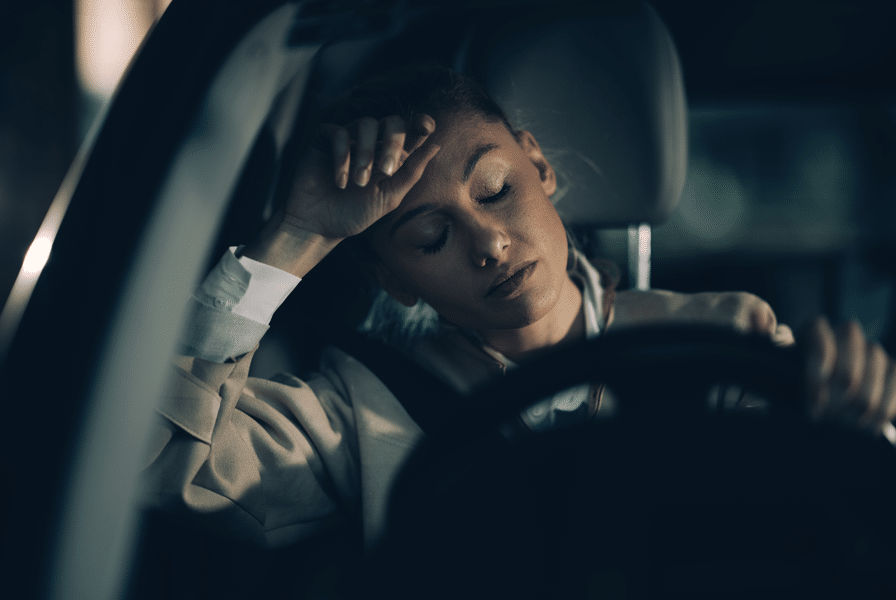
When Driving at Night Stops Being Relaxing and Starts Being Stressful
There used to be something peaceful about driving at night. Less traffic, cooler temperatures, and that quiet feeling of having the road mostly to yourself. But for a growing number of drivers, that relaxed confidence has been replaced with tension, squinting, and a general sense of unease every time the sun goes down.
The shift doesn’t happen overnight. It’s gradual enough that most people don’t notice the change until they’re actively dreading their evening commute or reconsidering dinner plans because they’d have to drive home after dark. Something that used to feel easy now requires extra concentration, and the headlights coming toward you seem brighter and more blinding than they used to be.
Table of Contents
ToggleThe Vision Changes Nobody Warns You About
Part of what makes this transition so frustrating is how little people talk about it beforehand. Regular eye exams focus on reading charts in well-lit rooms, not on how well someone can see a dark road with oncoming high beams. Passing a vision test doesn’t mean night driving will feel comfortable or safe.
Eyes change as people age, and some of those changes specifically affect low-light vision. The pupils don’t dilate as widely, which means less light gets in. The lenses become less flexible and may develop small imperfections that scatter light rather than focusing it cleanly. These aren’t dramatic problems that show up on a basic exam, but they make a real difference when driving conditions aren’t ideal.
Add in any existing vision issues, whether it’s nearsightedness, farsightedness, or astigmatism, and the challenges multiply. Regular glasses correct for distance and clarity, but they don’t do much about glare, halos around lights, or the reduced contrast that makes it harder to spot road edges and pedestrians in the dark.
Modern Cars Made the Problem Worse
Here’s where things get interesting. Individual vision changes are only part of the story. The other part is that headlights have gotten significantly brighter over the past decade. LED and HID lights put out more lumens than the old halogen bulbs, which sounds great in theory but creates real problems for oncoming drivers.
Those bright white and blue-tinted lights scatter more in the atmosphere and reflect harder off wet roads. They create more glare and make it harder for eyes to adjust between bright and dark areas. Even properly aimed headlights can be uncomfortable to look at, and plenty of them aren’t properly aimed to begin with.
The result is that drivers are dealing with more intense light sources than ever before, at the same time their eyes are becoming more sensitive to glare. It’s not just an age thing either. Younger drivers report the same frustrations with modern headlights, though they may handle the contrast changes better overall.
When Glasses Aren’t Enough
Most people assume that if they have the right prescription, their vision is handled. But standard corrective lenses don’t address all the issues that come up during night driving. They fix focus but don’t reduce glare or improve contrast in low light conditions.
This is where prescription night driving glasses have become more common. They combine vision correction with coatings designed to reduce glare and filter certain wavelengths of light that cause the most problems at night. The tint is usually subtle, not the heavy yellow that makes everything look strange, but enough to cut down on the scatter and halo effects from bright lights.
Some people find they make a noticeable difference, especially on longer drives or routes with lots of oncoming traffic. Others use them as a backup option for particularly challenging conditions. Either way, having something that addresses both the prescription needs and the glare issues can change how confident someone feels behind the wheel after dark.
The Psychological Side of Night Driving Stress
Once night driving starts feeling difficult, there’s often a mental component that makes it worse. Anxiety about not seeing well creates tension, which leads to fatigue, which further reduces reaction time and visual processing. It becomes a cycle that’s hard to break.
Some drivers start avoiding night trips altogether, which limits social activities and creates dependency on others for transportation. That loss of freedom is frustrating, especially when daytime driving still feels perfectly fine. The gap between “can drive during the day” and “uncomfortable driving at night” often happens before someone is ready to accept that they need to make adjustments.
The stress also shows up in how people drive. Gripping the steering wheel tighter, leaning forward to see better, constantly checking mirrors and blind spots because they’re not confident about what they’re seeing. All of that tension makes driving more tiring than it needs to be.
What Actually Makes a Difference
Addressing night driving stress isn’t about one single fix. It’s usually a combination of small adjustments that together make the experience manageable again. Getting an updated prescription helps if vision has changed. Making sure glasses have anti-reflective coating reduces glare from dashboard lights and oncoming traffic. Keeping windshields clean, inside and out, prevents additional light scatter.
Adjusting driving habits matters too. Slowing down slightly gives more time to process what’s ahead. Increasing following distance provides more space to react. Avoiding looking directly at oncoming headlights helps eyes stay adjusted to the darker surroundings. These aren’t dramatic changes, but they reduce the mental load of night driving.
Some people benefit from planning routes that avoid the brightest and busiest roads when possible. Taking a slightly longer path with better lighting and less traffic can make the trip less stressful, even if it adds a few minutes. The goal isn’t to avoid night driving entirely, it’s to make it feel manageable instead of overwhelming.
The Importance of Regular Eye Care
One thing that often gets overlooked is how quickly vision can change, especially during certain life stages. An eye exam from two years ago might not reflect current needs. Checking in annually, or more often if night driving feels increasingly difficult, ensures that any changes get addressed before they become major problems.
Eye doctors can also screen for conditions that specifically affect night vision, things that wouldn’t necessarily show up as a problem during daytime activities. Cataracts, for example, often make night driving noticeably harder long before they impact general vision enough to be obvious. Catching these issues early makes treatment simpler and outcomes better.
Even without specific conditions, updating prescriptions and discussing night driving concerns can lead to better solutions. Doctors can recommend lens coatings, tints, or other options that might not come up in a standard exam focused only on distance and reading vision.
Finding What Works
The frustrating part about night driving challenges is that what helps one person might not work as well for someone else. Vision is individual, and so are the specific issues people face. Some find that better glasses solve most of the problem. Others need to combine vision correction with driving technique adjustments and route planning.
What matters most is recognizing when night driving has shifted from comfortable to stressful and then actually doing something about it. Too many people just accept the discomfort or start limiting their activities because they assume nothing can be done. But between vision care, appropriate eyewear, and smart driving strategies, most people can regain at least some of the confidence they’ve lost.
Night driving doesn’t have to be something that causes anxiety or limits freedom. With the right approach, it can go back to being just another part of getting where someone needs to go, even if it never quite reaches that same peaceful feeling it had years ago. Sometimes good enough is actually good enough, especially when the alternative is staying home after sunset.


